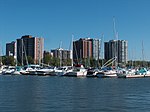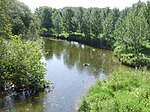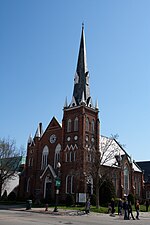Oakville Waterfront Festival
The Oakville Waterfront Festival was an annual festival in Oakville, Ontario from 1992 to 2009, which was revived for one time in 2013. During its run, Oakville Waterfront Festival attracted a diverse audience of as many as 50,000 annually. The festival featured concerts, a community stage, craft show, children's village, theme park, interactive games and more. Over the years, headliners at the concerts have included Hedley, Jann Arden, Tom Cochrane, Jesse Cook, Finger Eleven, Great Big Sea, Alannah Miles, Jully Black, Blue Rodeo, Colin James, Susan Aglukark, Michelle Wright, Jacksoul, Justin Hines, Bedouin Soundclash, The Philosopher Kings, The Johnstones No Warning and Ill Scarlett.
Excerpt from the Wikipedia article Oakville Waterfront Festival (License: CC BY-SA 3.0, Authors).Oakville Waterfront Festival
Lakeshore Road West, Oakville Bronte
Geographical coordinates (GPS) Address Nearby Places Show on map
Geographical coordinates (GPS)
| Latitude | Longitude |
|---|---|
| N 43.407777777778 ° | E -79.692222222222 ° |
Address
Lakeshore Road West
L6L 1X6 Oakville, Bronte
Ontario, Canada
Open on Google Maps







